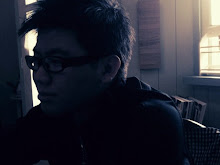For our humans, we have 5 senses- sight, hearing, smell, taste and touch. Bur for architecture, there are 2 more extra- skeleton and muscle. All these senses are very important when designing, either architect or interior designer. These 5 senses help the designer to create a nice work while provide an experiential space for the client. The specified organs are for each sense. Eyes for sight, ears for hearing, nose for smell, mouth for taste, any part of our body for touch, and the abstract one is one self’s feeling for skeleton and muscle.
“Architectural space is about layering for all of the senses. Like a musical composition, spatial features come together into a symphony for occupants to experience. Bringing a space to life means that architectural function and form is not just primarily for the visual sense. By engaging all of the senses, form and function may be more fully expressed so occupants can have deeper, more meaningful moments – feeling the bouquet of their surroundings in all of its dimensions.”
By Maria Lorena Lehman
http://sensingarchitecture.com/
When I get into a space, the first thing I do will be using my eyes to see it and observe it. At the same time, my ears will be functioned to hear the sound in the space. And yet, the smelling function of my nose will be activated too. Then, it comes to the taste of the mouth which I can get the feel of taste through the material used and surroundings. Moreover, the touch plays an important role in the senses which I can experience the texture of the space, such as the material used, the interior elements or other thing else. For the sense of skeleton and muscle, that is a matter of opinion. It doesn’t have a strict or proper answer for that. What I can say is based on our feeling and experience to get the sense of it. It is so true that what Maria Lorena Lehman wrote in the book. Architecture is all about layering all the senses. Without these senses, it will just imperfect or has abit defect. I am very agree with what she said although there are some exceptions. For example, Beethoven is deaf but still he was a great musician.
I have are some experience for sensing the architecture. The A Famosa is a popular destination which has great historical background in Malaysia. Once I got there, the whole structure caught my sight and made me wondering why it only has the entrance. Secondly, I will use my ears to hear whether there is any sound in the space but I got none for that. And then, my nose will automatically function that I got some smell which I can’t easily describe in words which gave me the sense of old. Besides, my mouth will start sensing too which I could feel the high humidity in the space compare to outer space. Moreover, my hands and legs will touch the walls and the ground of A Famosa respectively at the same time. The texture of wall and ground will easily get sensed through the touch of hands and legs. The brickwork on the wall is neat and well-applied while the ground is a cement floor. This realized me about the technology of construction during that time. Lastly, the skeleton and muscle is our feeling. The feeling I had when I was in the space was, I felt it is old but yet it is strong enough to stand and it will stand for longer in the future. It told me that it won’t’ easily give up for not standing there in the future. This is the humanity I got in the space.
As a conclusion, sensing the architecture is a compulsory job for all the architecture students. Without sensing, there will be no GOOD designs. What I get from the article is, feel it and experience it and go for it. Although this phrase has the advertise taste, this is true and express my feeling well.


No comments:
Post a Comment